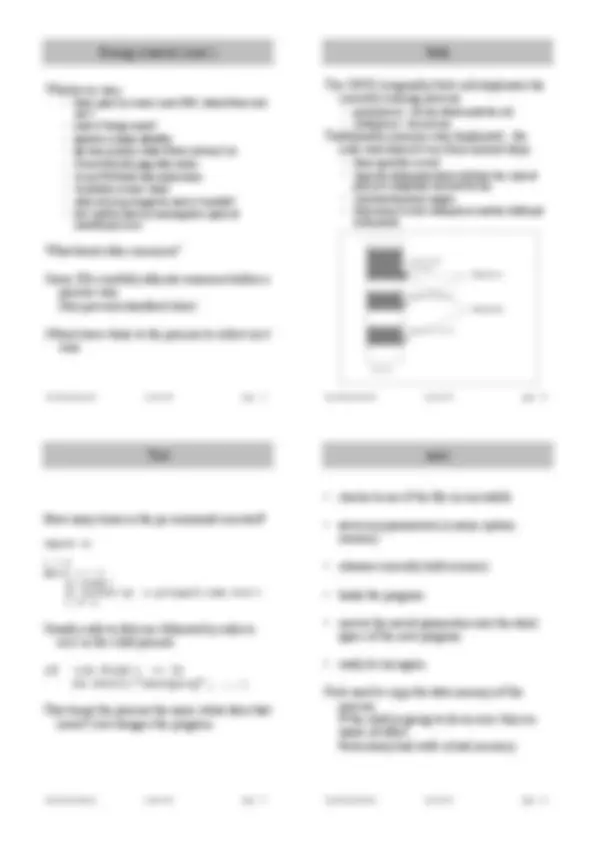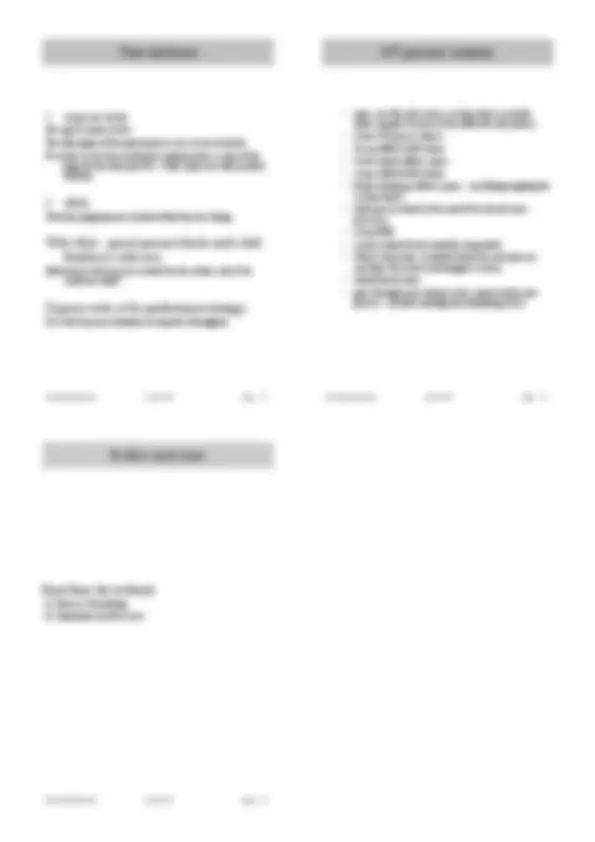




Study with the several resources on Docsity

Earn points by helping other students or get them with a premium plan


Prepare for your exams
Study with the several resources on Docsity

Earn points to download
Earn points by helping other students or get them with a premium plan
Community
Ask the community for help and clear up your study doubts
Discover the best universities in your country according to Docsity users
Free resources
Download our free guides on studying techniques, anxiety management strategies, and thesis advice from Docsity tutors
An in-depth look into process control blocks (pcbs), which are essential components of operating systems. Pcbs contain all the necessary information about a process, including memory usage, open files, devices, process state, priority, and more. Pcb structures in unix, linux, and windows nt, as well as process creation and states.
What you will learn
Typology: Lecture notes
1 / 4

This page cannot be seen from the preview
Don't miss anything!



Operating Systems Lecture 06 page
Where the OS can find all the information it needs to know about a process.
/* memory management info */ struct mm_struct mm; / open file information */ struct files_struct files; / tss for this task / struct thread_struct tss; int pid; volatile long state; / -1 unrunnable, 0 runnable, >0 stopped */ long priority; unsigned short uid,euid,suid,fsuid; #ifdef SMP int processor; #endif struct task_struct *p_opptr, *p_pptr, *p_cptr, *p_ysptr, p_osptr; / limits */ struct rlimit rlim[RLIM_NLIMITS]; long utime, stime, cutime, cstime, start_time; 2
Operating Systems Lecture 06 page
A collection of PCBs Commonly an array of pointers to PCBs
Operating Systems Lecture 06 page
No copy is made at first. The data pages of the parent process are set to read only. If a write occurs the resulting exception makes a copy of the page for the other process – both copies are then marked writable.
Trust the programmers to know what they are doing.
How many calls to ps are created by the earlier code if we could use vfork?
It is used in many situations to improve throughput. 13 Operating Systems Lecture 06 page
3.2 Process Scheduling 3.3 Operations on Processes 15